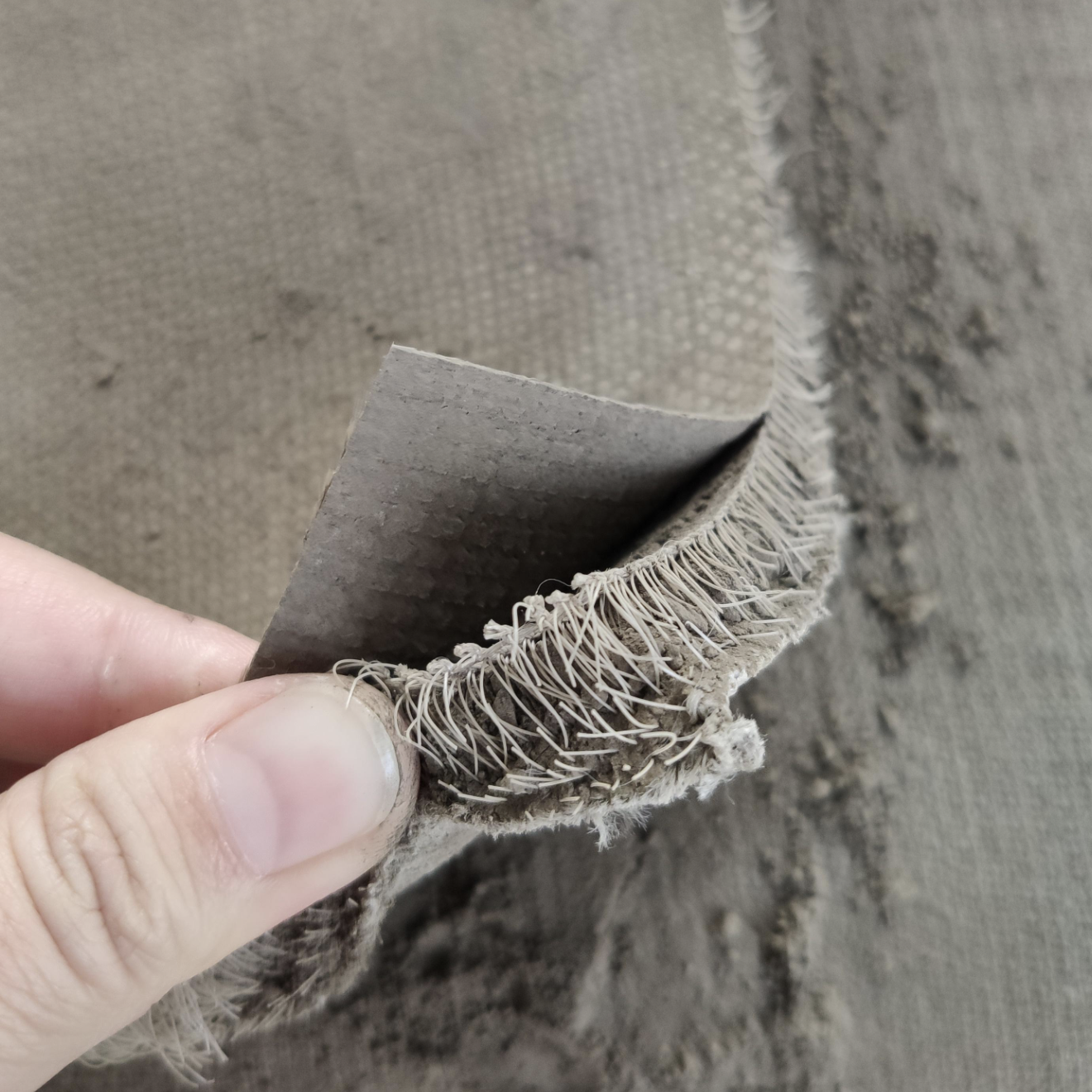
-
 Español
Español
-
 Portugues
Portugues
-
 Pусский
Pусский
-
 Français
Français
-
 Deutsch
Deutsch
-
 日本語
日本語
-
 한국어
한국어
-
 العربية
العربية
-
 Italiano
Italiano
-
 Nederlands
Nederlands
-
 Ελληνικά
Ελληνικά
-
 Svenska
Svenska
-
 Polski
Polski
-
 ไทย
ไทย
-
 Türk dili
Türk dili
-
 हिन्दी
हिन्दी
-
 Indonesia
Indonesia
-
 Melayu
Melayu
-
 Tiếng Việt
Tiếng Việt
-
 中文
中文
-
 dansk
dansk
-
 Magyar
Magyar
-
 қазақ
қазақ
-
 বাংলা
বাংলা
-
 עִברִית
עִברִית
-
 čeština
čeština
-
 Soomaali
Soomaali
-
 မြန်မာ
မြန်မာ
-
 فارسی
فارسی
-
 українська
українська
-
 norsk
norsk
-
 Gaeilge
Gaeilge
-
 беларускі
беларускі
-
 Română
Română
-
 ພາສາລາວ
ພາສາລາວ
-
 Filipino
Filipino
-
 lietuvių
lietuvių
-
 Cymraeg
Cymraeg
-
 македонски
македонски
-
 Suomalainen
Suomalainen
-
 slovenský
slovenský
-
 o'zbek
o'zbek
-
 اردو
اردو
-
 հայերեն
հայերեն
-
 Igbo
Igbo
-
 български
български
-
 سنڌي
سنڌي
-
 Shona
Shona
-
 සිංහල
සිංහල
-
 Hrvatski
Hrvatski
-
 íslenskur
íslenskur
-
 galego
galego
-
 català
català
-
 Zulu South Africa
Zulu South Africa
-
 Afrikaans isiXhosa
Afrikaans isiXhosa
-
 ಕನ್ನಡ
ಕನ್ನಡ
-
 lëtzebuergesch
lëtzebuergesch
-
 Indonésia Sunda
Indonésia Sunda
-
 basa jawa
basa jawa
-
 ગુજરાતી
ગુજરાતી
-
 Кыргызча
Кыргызча
-
 тоҷикӣ
тоҷикӣ
-
 Србија
Србија
-
 Twi
Twi
-
 Hawaii
Hawaii
-
 Cebu
Cebu
-
 नेपाल
नेपाल
-
 euskara
euskara
-
 Kurdî
Kurdî
-
 frissi
frissi
-
 יידיש
יידיש
-
 latvija
latvija
-
 slovenija
slovenija
-
 kiswahili
kiswahili
-
 ਪੰਜਾਬ
ਪੰਜਾਬ
-
 پښتو
پښتو
-
 საქართველოს
საქართველოს
-
 hua moni
hua moni
-
 bosna
bosna
-
 తెలుగు
తెలుగు
-
 தமிழ்
தமிழ்
-
 Kreyòl ayisyen
Kreyòl ayisyen
-
 Eesti
Eesti
-
 Corsica
Corsica
-
 Yoruba
Yoruba
-
 Gàidhlig na h-Alba
Gàidhlig na h-Alba
-
 Samoa
Samoa
-
 Монгол
Монгол
-
 Hausa
Hausa
-
 Azərbaycan
Azərbaycan
-
 አማራ
አማራ
-
 Shqipëria
Shqipëria
-
 Malagasy
Malagasy
-
 मराठी
मराठी
-
 മലയാളം
മലയാളം
-
 Malta
Malta
-
 ខ្មែរ
ខ្មែរ
-
 Chicheva
Chicheva
-
 中文(繁体)
中文(繁体)
-
 ଓଡିଆ
ଓଡିଆ
-
 Setswana
Setswana
-
 Afrikaans
Afrikaans
-
 Aymara
Aymara
-
 Башҡорт
Башҡорт
-
 Türkmenler
Türkmenler
-
 ትግሪኛ
ትግሪኛ
-
 Afaan Oromoo
Afaan Oromoo
-
 অসমীয়া
অসমীয়া
-
 Kinyarwanda
Kinyarwanda
-
 Ilocano
Ilocano
-
 Wolof
Wolof
-
 अवधी
अवधी
-
 Oluganda
Oluganda
-
 Bikol
Bikol
-
 Fulɓe
Fulɓe
-
 Kikongo
Kikongo
-
 Sango
Sango
-
 ދިވެހި
ދިވެހި
-
 Lingala
Lingala
-
 मैथिली
मैथिली
-
 Tsonga
Tsonga
-
 ꯃꯦꯏ ꯊꯥꯏ꯫
ꯃꯦꯏ ꯊꯥꯏ꯫
-
 brezhoneg
brezhoneg
-
 Furlan
Furlan
-
 नेवा
नेवा
-
 རྫོང་ཁ
རྫོང་ཁ
-
 Santali
Santali
-
 Аҧсуа
Аҧсуа
-
 Нохчийн
Нохчийн
-
 Чӑваш
Чӑваш
-
 Татар
Татар
-
 Batak Karo
Batak Karo
-
 دری
دری
-
 Diura
Diura
-
 Fengyu
Fengyu
-
 Eʋegbe
Eʋegbe
-
 Iban
Iban
-
 Fiji
Fiji
-
 Tonga
Tonga
-
 Inuktitut
Inuktitut
-
 Nahuatl
Nahuatl
-
 maaya yucatec
maaya yucatec
-
 Runasimi
Runasimi
-
 guarani
guarani
-
 Qafar
Qafar
-
 Acholi
Acholi
-
 Dinka
Dinka
-
 Luo
Luo
-
 Lundi
Lundi
-
 isiNdebele
isiNdebele
-
 Tshivenḓa
Tshivenḓa
-
 Sesotho sa Leboa
Sesotho sa Leboa
-
 Sesotho sa Borwa
Sesotho sa Borwa
-
 Ndumbe
Ndumbe
-
 Papuan Pidgin
Papuan Pidgin
-
 Rromani ćhib
Rromani ćhib
-
 Thok Nath
Thok Nath
yuxiatugong@163.com
+86 18353494641
-
 Español
Español
-
 Portugues
Portugues
-
 Pусский
Pусский
-
 Français
Français
-
 Deutsch
Deutsch
-
 日本語
日本語
-
 한국어
한국어
-
 العربية
العربية
-
 Italiano
Italiano
-
 Nederlands
Nederlands
-
 Ελληνικά
Ελληνικά
-
 Svenska
Svenska
-
 Polski
Polski
-
 ไทย
ไทย
-
 Türk dili
Türk dili
-
 हिन्दी
हिन्दी
-
 Indonesia
Indonesia
-
 Melayu
Melayu
-
 Tiếng Việt
Tiếng Việt
-
 中文
中文
-
 dansk
dansk
-
 Magyar
Magyar
-
 қазақ
қазақ
-
 বাংলা
বাংলা
-
 עִברִית
עִברִית
-
 čeština
čeština
-
 Soomaali
Soomaali
-
 မြန်မာ
မြန်မာ
-
 فارسی
فارسی
-
 українська
українська
-
 norsk
norsk
-
 Gaeilge
Gaeilge
-
 беларускі
беларускі
-
 Română
Română
-
 ພາສາລາວ
ພາສາລາວ
-
 Filipino
Filipino
-
 lietuvių
lietuvių
-
 Cymraeg
Cymraeg
-
 македонски
македонски
-
 Suomalainen
Suomalainen
-
 slovenský
slovenský
-
 o'zbek
o'zbek
-
 اردو
اردو
-
 հայերեն
հայերեն
-
 Igbo
Igbo
-
 български
български
-
 سنڌي
سنڌي
-
 Shona
Shona
-
 සිංහල
සිංහල
-
 Hrvatski
Hrvatski
-
 íslenskur
íslenskur
-
 galego
galego
-
 català
català
-
 Zulu South Africa
Zulu South Africa
-
 Afrikaans isiXhosa
Afrikaans isiXhosa
-
 ಕನ್ನಡ
ಕನ್ನಡ
-
 lëtzebuergesch
lëtzebuergesch
-
 Indonésia Sunda
Indonésia Sunda
-
 basa jawa
basa jawa
-
 ગુજરાતી
ગુજરાતી
-
 Кыргызча
Кыргызча
-
 тоҷикӣ
тоҷикӣ
-
 Србија
Србија
-
 Twi
Twi
-
 Hawaii
Hawaii
-
 Cebu
Cebu
-
 नेपाल
नेपाल
-
 euskara
euskara
-
 Kurdî
Kurdî
-
 frissi
frissi
-
 יידיש
יידיש
-
 latvija
latvija
-
 slovenija
slovenija
-
 kiswahili
kiswahili
-
 ਪੰਜਾਬ
ਪੰਜਾਬ
-
 پښتو
پښتو
-
 საქართველოს
საქართველოს
-
 hua moni
hua moni
-
 bosna
bosna
-
 తెలుగు
తెలుగు
-
 தமிழ்
தமிழ்
-
 Kreyòl ayisyen
Kreyòl ayisyen
-
 Eesti
Eesti
-
 Corsica
Corsica
-
 Yoruba
Yoruba
-
 Gàidhlig na h-Alba
Gàidhlig na h-Alba
-
 Samoa
Samoa
-
 Монгол
Монгол
-
 Hausa
Hausa
-
 Azərbaycan
Azərbaycan
-
 አማራ
አማራ
-
 Shqipëria
Shqipëria
-
 Malagasy
Malagasy
-
 मराठी
मराठी
-
 മലയാളം
മലയാളം
-
 Malta
Malta
-
 ខ្មែរ
ខ្មែរ
-
 Chicheva
Chicheva
-
 中文(繁体)
中文(繁体)
-
 ଓଡିଆ
ଓଡିଆ
-
 Setswana
Setswana
-
 Afrikaans
Afrikaans
-
 Aymara
Aymara
-
 Башҡорт
Башҡорт
-
 Türkmenler
Türkmenler
-
 ትግሪኛ
ትግሪኛ
-
 Afaan Oromoo
Afaan Oromoo
-
 অসমীয়া
অসমীয়া
-
 Kinyarwanda
Kinyarwanda
-
 Ilocano
Ilocano
-
 Wolof
Wolof
-
 अवधी
अवधी
-
 Oluganda
Oluganda
-
 Bikol
Bikol
-
 Fulɓe
Fulɓe
-
 Kikongo
Kikongo
-
 Sango
Sango
-
 ދިވެހި
ދިވެހި
-
 Lingala
Lingala
-
 मैथिली
मैथिली
-
 Tsonga
Tsonga
-
 ꯃꯦꯏ ꯊꯥꯏ꯫
ꯃꯦꯏ ꯊꯥꯏ꯫
-
 brezhoneg
brezhoneg
-
 Furlan
Furlan
-
 नेवा
नेवा
-
 རྫོང་ཁ
རྫོང་ཁ
-
 Santali
Santali
-
 Аҧсуа
Аҧсуа
-
 Нохчийн
Нохчийн
-
 Чӑваш
Чӑваш
-
 Татар
Татар
-
 Batak Karo
Batak Karo
-
 دری
دری
-
 Diura
Diura
-
 Fengyu
Fengyu
-
 Eʋegbe
Eʋegbe
-
 Iban
Iban
-
 Fiji
Fiji
-
 Tonga
Tonga
-
 Inuktitut
Inuktitut
-
 Nahuatl
Nahuatl
-
 maaya yucatec
maaya yucatec
-
 Runasimi
Runasimi
-
 guarani
guarani
-
 Qafar
Qafar
-
 Acholi
Acholi
-
 Dinka
Dinka
-
 Luo
Luo
-
 Lundi
Lundi
-
 isiNdebele
isiNdebele
-
 Tshivenḓa
Tshivenḓa
-
 Sesotho sa Leboa
Sesotho sa Leboa
-
 Sesotho sa Borwa
Sesotho sa Borwa
-
 Ndumbe
Ndumbe
-
 Papuan Pidgin
Papuan Pidgin
-
 Rromani ćhib
Rromani ćhib
-
 Thok Nath
Thok Nath

News Center
News Center
HOT PRODUCT
Industrial Plant Waterproof Sheet for Chemical Resistance
2025-10-14 08:02:57

Industrial Plant Waterproof Sheet for Chemical Resistance
Introduction
Industrial plants, particularly those in chemical processing, petrochemical, pharmaceutical, and heavy manufacturing sectors, require robust waterproofing solutions to protect infrastructure from corrosive chemicals, water ingress, and environmental degradation. Waterproof sheets designed for chemical resistance play a critical role in safeguarding floors, walls, tanks, and secondary containment systems. These sheets must exhibit high durability, chemical inertness, and long-term performance under harsh conditions.
This article explores the key properties, materials, applications, and installation considerations of industrial waterproof sheets engineered for chemical resistance.
---
1. Key Properties of Chemical-Resistant Waterproof Sheets
To withstand aggressive industrial environments, waterproof sheets must possess the following characteristics:
1.1 Chemical Resistance
The primary requirement is resistance to acids, alkalis, solvents, oils, and other corrosive substances. Materials such as polyvinyl chloride (PVC), polyethylene (PE), polypropylene (PP), and fluoropolymers (e.g., PTFE) are commonly used due to their inertness.
1.2 Mechanical Strength
Sheets must endure mechanical stress, abrasion, and punctures. Reinforced fabrics or composite layers enhance tensile strength and tear resistance.
1.3 Thermal Stability
Industrial environments often experience temperature fluctuations. High-performance sheets should maintain integrity in extreme heat or cold without cracking or deforming.
1.4 Flexibility & Seam Integrity
Flexibility ensures easy installation on uneven surfaces, while strong seam welding prevents leaks. Hot-air welding or solvent bonding is often employed for seamless joints.
1.5 UV & Weather Resistance
For outdoor applications, UV stabilizers prevent degradation from sunlight exposure.
1.6 Non-Toxicity & Compliance
Sheets should comply with environmental and safety regulations (e.g., REACH, FDA, NSF) to avoid contamination.
---
2. Common Materials for Chemical-Resistant Waterproofing
2.1 Polyvinyl Chloride (PVC)
- Pros: Cost-effective, flexible, resistant to acids, alkalis, and oils.
- Cons: Limited resistance to some solvents and high temperatures.
- Applications: Tank linings, secondary containment, flooring.
2.2 Polyethylene (PE) & High-Density Polyethylene (HDPE)
- Pros: Excellent chemical resistance, lightweight, weldable.
- Cons: Lower tensile strength compared to reinforced materials.
- Applications: Chemical storage liners, pond liners.
2.3 Polypropylene (PP)
- Pros: Resistant to strong acids and bases, high melting point.
- Cons: Less flexible than PVC.
- Applications: Battery manufacturing, wastewater treatment.
2.4 Fluoropolymers (PTFE, PVDF)
- Pros: Exceptional resistance to nearly all chemicals, high-temperature tolerance.
- Cons: Expensive, difficult to weld.
- Applications: Semiconductor plants, pharmaceutical cleanrooms.
2.5 Rubber-Based Sheets (EPDM, Neoprene)
- Pros: Elasticity, weather resistance.
- Cons: Variable chemical resistance.
- Applications: Outdoor roofing, pipe seals.
2.6 Composite & Reinforced Sheets
- Pros: Combines multiple materials (e.g., fiberglass-reinforced PVC) for enhanced durability.
- Applications: Heavy industrial flooring, spill containment.
---
3. Applications in Industrial Plants
3.1 Flooring Protection
Chemical spills can corrode concrete floors. Waterproof sheets act as a barrier, preventing leaks into sublayers. Textured surfaces improve slip resistance.
3.2 Secondary Containment
Regulations often mandate secondary containment for chemical storage areas. Liners prevent hazardous leaks from reaching soil or water sources.
3.3 Tank & Pipe Linings
Interior linings protect metal tanks from corrosion. Flexible sheets conform to complex shapes.
3.4 Roofing & Wall Cladding
Chemical-resistant membranes prevent roof degradation from acid rain or fumes.
3.5 Wastewater Treatment
Liners in sedimentation tanks resist bio-chemical corrosion.
---
4. Installation Best Practices
4.1 Surface Preparation
- Clean and level the substrate (concrete, metal).
- Repair cracks and remove sharp protrusions.
4.2 Sheet Layering & Welding
- Overlap seams by 50–100 mm.
- Use hot-air welding for PVC/PP; adhesive for PE.
4.3 Quality Control
- Conduct spark testing or air pressure tests to detect leaks.
- Inspect seams and edges for weak points.
4.4 Maintenance
- Regular inspections for cuts, swelling, or chemical degradation.
- Prompt repairs using compatible patches.
---
5. Challenges & Solutions
5.1 Chemical Compatibility
- Challenge: Not all sheets resist every chemical.
- Solution: Consult chemical resistance charts before selection.
5.2 Temperature Extremes
- Challenge: Thermal expansion/contraction causes buckling.
- Solution: Use expansion joints or flexible materials.
5.3 Installation Errors
- Challenge: Poor seams lead to leaks.
- Solution: Train installers in certified welding techniques.
---
6. Future Trends
- Smart Liners: Embedded sensors to detect leaks or chemical permeation.
- Eco-Friendly Materials: Biodegradable or recyclable polymers.
- Nano-Coatings: Ultra-thin, high-resistance layers for critical areas.
---
Conclusion
Chemical-resistant waterproof sheets are indispensable in industrial plants to ensure safety, regulatory compliance, and infrastructure longevity. Material selection, proper installation, and maintenance are key to maximizing performance. As technology advances, innovative solutions will further enhance durability and sustainability in harsh industrial environments.
By understanding the properties and applications of these sheets, industries can mitigate risks associated with chemical exposure and environmental hazards effectively.
---
(Word count: ~2000)








 Phone
Phone
Comment
(0)